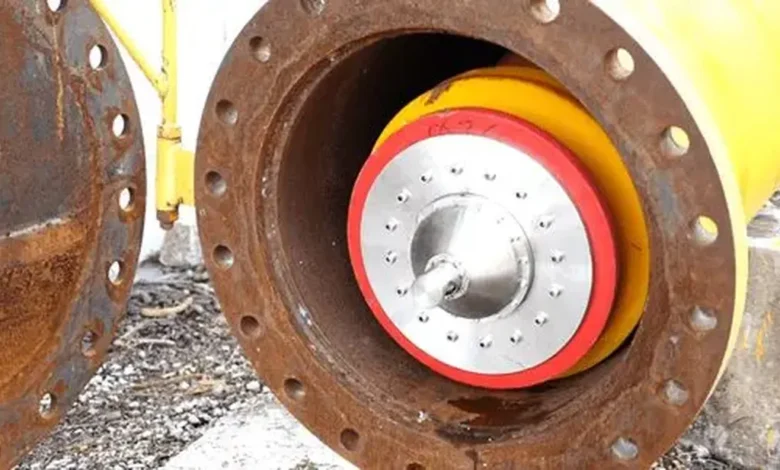The primary functions of pigging include:

- Cleaning: One of the most common uses of pigs is for cleaning pipelines. Cleaning pigs are designed to remove debris, scale, wax, and other buildups from the pipeline walls, ensuring smooth flow and preventing blockages.
- Inspection: Inspection pigs are equipped with sensors, cameras, or measurement devices to assess the condition of the pipeline. They can detect corrosion, cracks, dents, or other defects that may compromise the integrity of the pipeline.
- Batching and Product Separation: In multi-product pipelines, pigs can be used to separate different products and prevent contamination. Batching pigs ensure that products are delivered in the correct sequence without mixing.
- Maintenance: Pigs can also be used for maintenance purposes, such as applying coatings or inhibitors to protect the pipeline from corrosion or erosion.
The pigging process typically involves launching the pig into the pipeline through a launcher or pig trap. The pig travels through the pipeline propelled by the fluid flow or by a separate driving mechanism. As it moves through the pipeline, the pig performs its designated task, whether it’s cleaning, inspecting, or separating products. Once the pig reaches the end of the pipeline or the designated retrieval point, it is removed using a receiver or pig trap.
Pigging is an essential aspect of pipeline what is pigging operations as it helps maintain pipeline integrity, optimize flow efficiency, reduce maintenance costs, and ensure compliance with regulatory standards. It allows for proactive maintenance and early detection of potential issues, ultimately contributing to the safe and reliable operation of pipelines across various industries such as oil and gas, water management, chemical processing, and more.
What is Pigging?
- Definition: Pigging refers to the process of using pigs—cylindrical or spherical devices inserted into pipelines—to perform various functions such as cleaning, inspection, product separation, and maintenance.
- Types of Pigs:
- Cleaning Pigs: Remove debris, scale, wax, and other buildups from pipeline walls.
- Inspection Pigs: Assess pipeline condition, detect defects, corrosion, or leaks.
- Batching Pigs: Separate different products in multi-product pipelines, prevent contamination.
- Specialty Pigs: Perform specific tasks like de-waxing, applying coatings, or sealing leaks.
Importance of Pigging Operations
- Pipeline Maintenance: Regular pigging operations prevent blockages, optimize flow, and reduce downtime for maintenance.
- Integrity Assessment: Inspection pigs provide crucial data on pipeline condition, allowing for proactive maintenance and risk mitigation.
- Product Quality: Pigging ensures product quality, purity, and compliance with regulatory standards, particularly crucial in industries like food and pharmaceuticals.
- Efficiency and Cost Savings: Clean pipelines experience reduced friction, lower energy consumption, and extended asset lifespan, leading to cost savings.
The Pigging Process in Detail
- Preparation:
- Assess pipeline condition, product type, and operational requirements.
- Select appropriate pigs, launchers, receivers, and pigging equipment.
- Plan pigging schedule, sequence, and procedures.
- Launching the Pig:
- Open the launcher or pig trap and insert the pig into the pipeline.
- Ensure proper alignment, sealing, and connection to maintain pressure and prevent leaks.
- Pig Movement:
- Pigs are propelled through the pipeline by the fluid flow or a separate driving mechanism.
- They perform their designated tasks such as cleaning, inspection, or product separation.
- Monitoring and Data Collection:
- Use sensors, cameras, or measurement devices on inspection pigs to collect data.
- Monitor pig movement, pipeline conditions, and operational parameters in real-time.
- Retrieval:
- Guide the pig to the receiver or pig trap at the end of the pipeline.
- Retrieve the pig, inspect it for any issues or abnormalities, and analyze collected data.
Benefits of Pigging System Processes
- Enhanced Pipeline Cleanliness: Remove deposits, scale, wax, and contaminants, ensuring optimal flow conditions and preventing blockages.
- Improved Asset Integrity: Detect corrosion, defects, leaks, and mechanical damage early, extending asset lifespan and reducing maintenance costs.
- Regulatory Compliance: Ensure compliance with safety, environmental, and quality standards, avoiding penalties and reputational risks.
- Efficiency and Reliability: Optimize flow rates, reduce energy consumption, and minimize downtime for maintenance, enhancing overall operational efficiency
Pigging is an essential aspect of pipeline operations as it helps maintain pipeline integrity, optimize flow efficiency, reduce maintenance costs, and ensure compliance with regulatory standards. It allows for proactive maintenance and early detection of potential issues, ultimately contributing to the safe and reliable operation of pipelines across various industries such as oil and gas, water management, chemical processing, and more.





